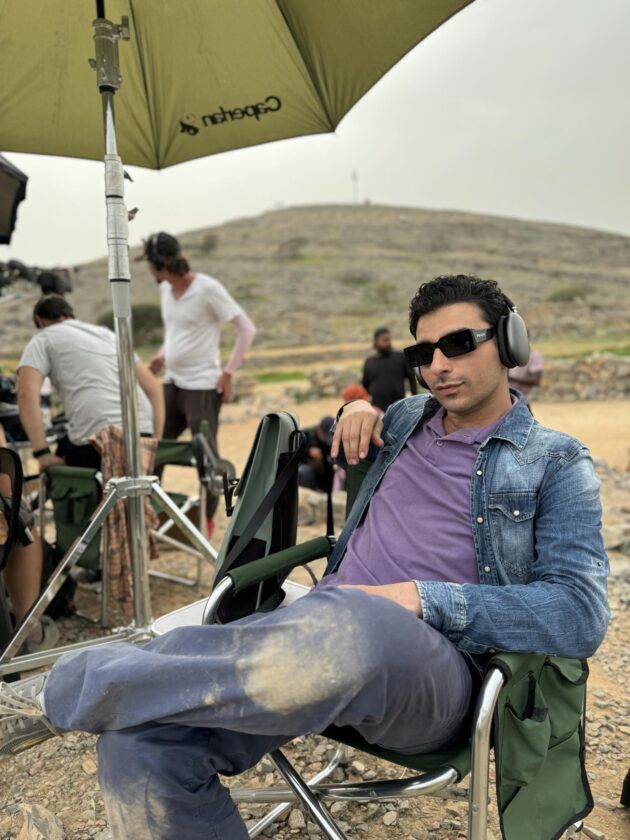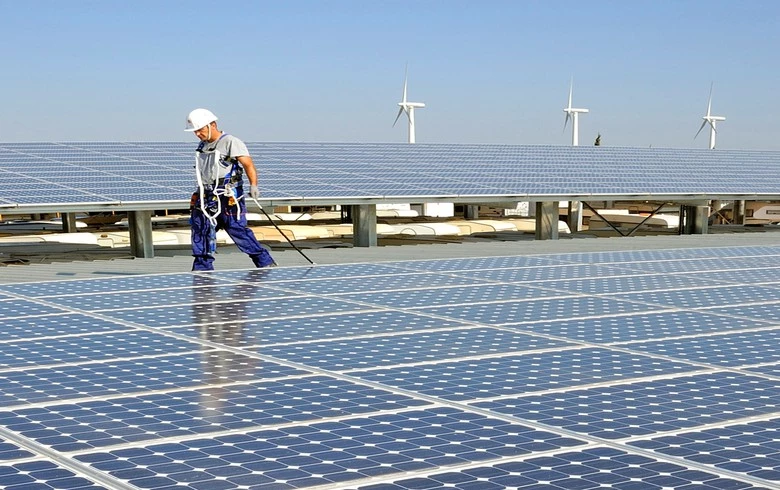Seemingly unthinkable just a few months ago, the fall of Aleppo represents a major victory for forces loyal to the regime of Syrian President Bashar al-Assad. The pressing question now is where these forces will head next: eastwards, so as to confront the Islamic State, or to the west and south in order to roll back opposition strongholds in Idlib province and around Deraa city?
The Islamic State appeared to resolve the question in mid-December with its dramatic recapture of Palmyra from regime forces and its swift onward push towards the strategic T-4 military airbase east of Homs. But the regime has persistently prioritized defeating the opposition in western parts of Syria over confronting the Islamic State, and will likely continue to do so until it has achieved the former goal. That is no surprise, but the regime’s opponents, Syrian and foreign, still appear unprepared for what lies ahead.
NO REASON TO MOVE ON RAQQA NOW
The fall of Palmyra to the Islamic State for the second time since May 2015, despite intense Russian bombardment, underlines the inability of the regime to simultaneously undertake major military operations on several fronts. In the absence of Russian advisors and air support, or of stiffening by Hezbollah fighters, the Syrian army remains largely unable to compensate for manpower shortages, inept command and control, and poor unit cohesion due to low morale and low trust in superior officers. This is an added reason for the regime to postpone going for Raqqa.
More to the point, however, is that neither the Assad regime nor Russia is likely to expend major resources in an effort to retake Raqqa before being assured of the political rewards for doing so. Both regard it as essential to gain recognition from the United States for their equal status as partners in the fight against the Islamic State, and neither is in the habit of offering gifts for free, certainly not in advance. But this must wait for the inauguration of president-elect Donald Trump and the activation of his foreign policy and national security teams.
The regime may seek to improve its anti-Islamic State credentials in the meantime by pushing towards Tabqa, which controls the way to Raqqa. Success would offer the double advantages of cutting off the large Islamic State enclave that stretches to the outskirts of Aleppo and of positioning government troops for an eventual push onward to Raqqa. But after the abject failure of a previous advance on Tabqa last June, the regime will not go even this far without Russian air cover, which was withheld last time. Instead, it will consolidate its hold on Aleppo, in part by working to clear opposition fighters from areas to the south of the city. It may also maintain a focus on Al-Bab, north of Aleppo, in order to dissuade the Turkish-backed opposition forces of Euphrates Shield from entering Al-Bab, and retains the option of trying to retake other Islamic State-held towns to the east.
Most importantly, however, regime forces may attempt to regain control of the international highways connecting Aleppo to Hama and to Lattakieh in the coastal region. A tough, drawn-out battle awaits the regime and progress will be incremental, but the recent intensification of air strikes on opposition-held population centers straddling key parts of the highways indicates that preparation for a new military campaign is already underway. Reopening the highways to civilian traffic would provide irrefutable evidence of the regime’s claim to effective control over the country’s main population centers, and greatly improve its ability to move military reinforcements from one frontline to another, fulfilling Assad’s vow in mid-October to use Aleppo as a springboard to move to other areas.
If successful, the regime will have severely reduced the remaining opposition stronghold in Idlib province in the process, breaking it down into fragmented pockets and undermining its ability to survive. But even if the regime fails to achieve its main goal, it has already hemmed the armed opposition into Idlib and the western Aleppo countryside, making it more dependent than ever on Turkey for military resupply, as well as for the continued flow of goods and humanitarian assistance. Movement of rebel fighters between Idlib and the Turkish-backed opposition pocket around Azaz and Jarablus to the north of Aleppo will also depend entirely on Turkish permission.
This degree of dependence on Turkey should worry the opposition. Turkey effectively sealed the fate of the eastern half of the city of Aleppo by pulling thousands of opposition fighters away at a crucial moment in rebel attempts to lift the siege in August, in order to use them against the Kurdish-led Syrian Democratic Forces near Jarablus. This does not mean that Turkey will abandon the opposition in Idlib anytime soon. Its ongoing effort to prevent internal differences from tearing apart the powerful Ahrar al-Sham rebel movement attests to this. But it will come under growing Russian pressure to do so, or at least to curtail its assistance to the opposition under the guise of cutting off support for Jabhat Fatah al-Sham (formerly Jabhat al-Nusra). Faced with what is likely to be a distinct cooling of U.S. interest in Syria under a Trump administration, Turkey may quietly shift to a posture similar to that of Jordan, which maintains a very tight grip on its own border with Syria.
A TELLING STALEMATE IN SOUTHERN SYRIA
The stalemate in southern Syria is telling. The armed opposition’s Southern Front alliance has been almost entirely passive since the failure of its much-trumpeted offensive to wrest the whole of Deraa city from the regime in summer 2015. Saudi Arabia subsequently curtailed its financial assistance, and the Military Operations Center (MOC) in Amman, jointly run by Jordan and the United States, has pressured the rebels to refocus their effort away from the regime to confront the Islamic State-affiliated Khaled ibn al-Walid Army in the western Deraa countryside. The Southern Front has been “defanged,” but the MOC will seek to preserve the armed opposition, both as a bulwark against defections to the Islamic State (or to Jabhat Fatah al-Sham) and for leverage in eventual talks with Russia and the Assad regime.
But the regime has other plans, and will chip away at opposition-held territory. As an opposition website recently noted, since late 2015 regime forces have followed a discernible strategy of improving their grip on the highway between Damascus and Deraa and acquiring a launchpad for expansion north and west of the city. Their capture of Al-Faqia village on December 10 opened the way for an advance towards the major opposition-held towns of Inkhil, Jasem, and Nawa. Speaking a few days earlier, a spokesperson for the Free Syrian Army had already seen a regime offensive in the region as “inevitable,” warning that “If we do not move the fronts, the regime will move from the north to the south, and we will meet the same fate as our brothers in Aleppo.”
The regime will also seek to whittle away at the opposition zone of control in the south by coaxing or coercing additional communities into truces that leave rebels in place with light arms and local administrative councils, but bring these communities formally under government authority. The opposition defeat in Aleppo will strengthen this trend. As rebel fighters were being evacuated from the city, the so-called Russian Centre for Reconciliation of Opposing Sides in the Syrian Arab Republic, which comes under the Russian Federation’s Ministry of Defense, was claiming, “The total number of inhabited areas, the leaders of which had signed reconciliation agreements, has reached 1,057.” The center is reportedly negotiating similar agreements in an additional 842 communities.
The regime may also seek to win back control of the Nasib crossing with Jordan, restoring cross-border trade that had continued up to the moment armed opposition groups seized it in April 2015, much to Jordanian chagrin. The reopening of Nasib would please governments on both sides of the border and restore regime control from the Jordanian border all the way to Aleppo. Should Russia succeed in brokering serial understandings—if not formal deals—between the regime, Turkey, and the Kurds, goods and international aid could start to flow directly from the border crossing at Azaz to Aleppo and beyond in 2017. A secure movement arrangement is not as inconceivable as it may sound: international aid agencies have estimated that Turkish goods worth hundreds of millions of dollars were already reaching regime and the Islamic State areas via opposition-held Idlib in early 2016.
The regime victory in Aleppo ushers in a complex phase of political and military positioning among the various parties to the Syrian conflict. A peace deal is still not in the offing, although Russian President Vladimir Putin stated on December 15 that he and his Turkish counterpart Recep Tayyip Erdogan were working for an overall truce in Syria and a new round of peace talks between the Syrian government and the opposition. Meanwhile, opposition sources claimed that Russian officers had also met secretly with representatives of principal armed opposition groups in Istanbul, which Putin credited with helping to broker the rebel exit from Aleppo.
The Syrian opposition has been on a gradual course of decline for a long time, but the fall of Aleppo will accelerate this and make internal fissures more visible, as the tensions now straining Ahrar al-Sham demonstrate. The former head of the Syrian National Coalition, Ahmad Jarba, gave an additional sign of the scope for serious political divergences on September 10 by echoing Assad’s longstanding assertion that “there will be no solution in Syria except through a Syrian-Syrian dialogue,” albeit “under the umbrella of the United Nations.”
In theory, International Crisis Group senior analyst Noah Bonsey has rightly observed, the opposition could shift to “a longer-term strategy of asymmetric insurgency.” However, this would play “further to the advantage of [S]alafi-jihadis, and would make it still harder for the rebellion to cobble together a coherent, credible, and practical political leadership.”
Whether Russia’s commitment to securing even a modicum of power-sharing in Syria is genuine or not, and whatever policy on Syria the Trump administration actually adopts, the Assad regime is not sitting back in the meantime in anticipation of political gains it may make in coming months. Although its army remains hobbled by debilitating flaws, the graduation parade of some 2,400 new officers on November 14 showed that it continues to ramp up its military effort. Writing last May, veteran Syrian journalist and analyst Ibrahim Hamidi reported that the regime anticipated achieving its aim of winning a “crushing victory” within two years. On present trends, this no longer seems like hyperbole.
Carnegie





Comments are closed.